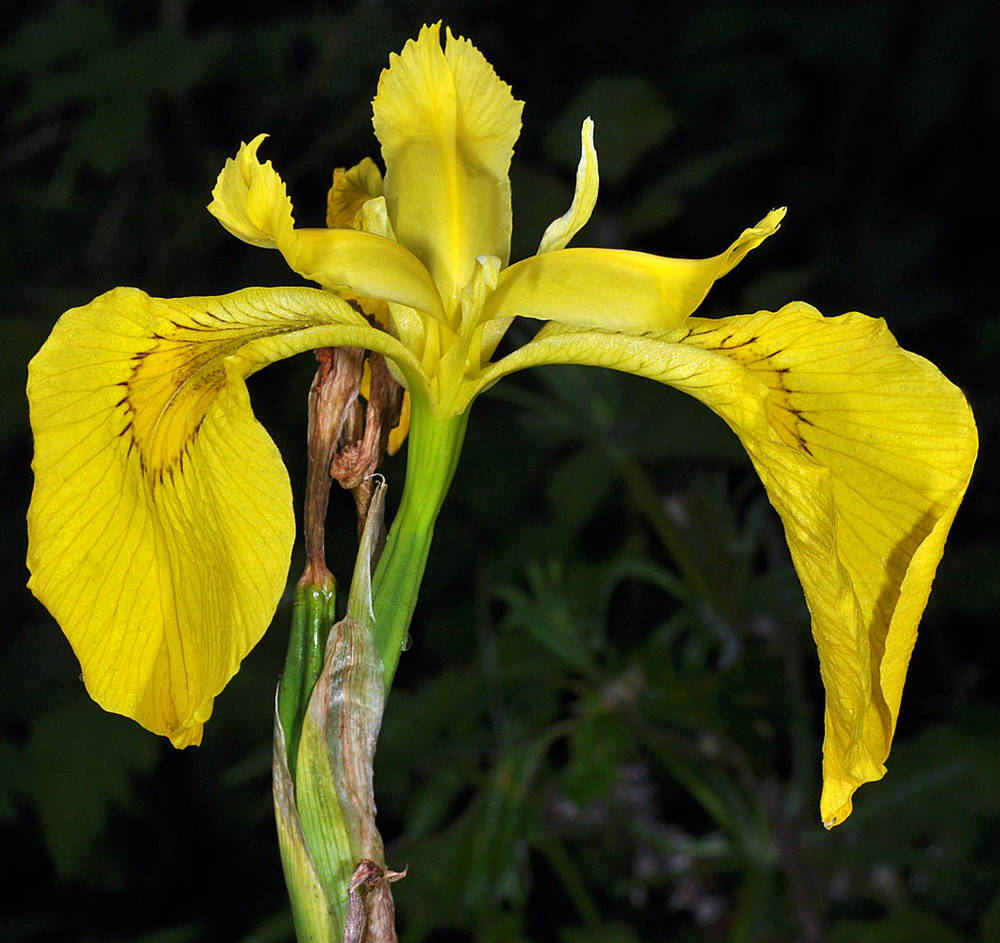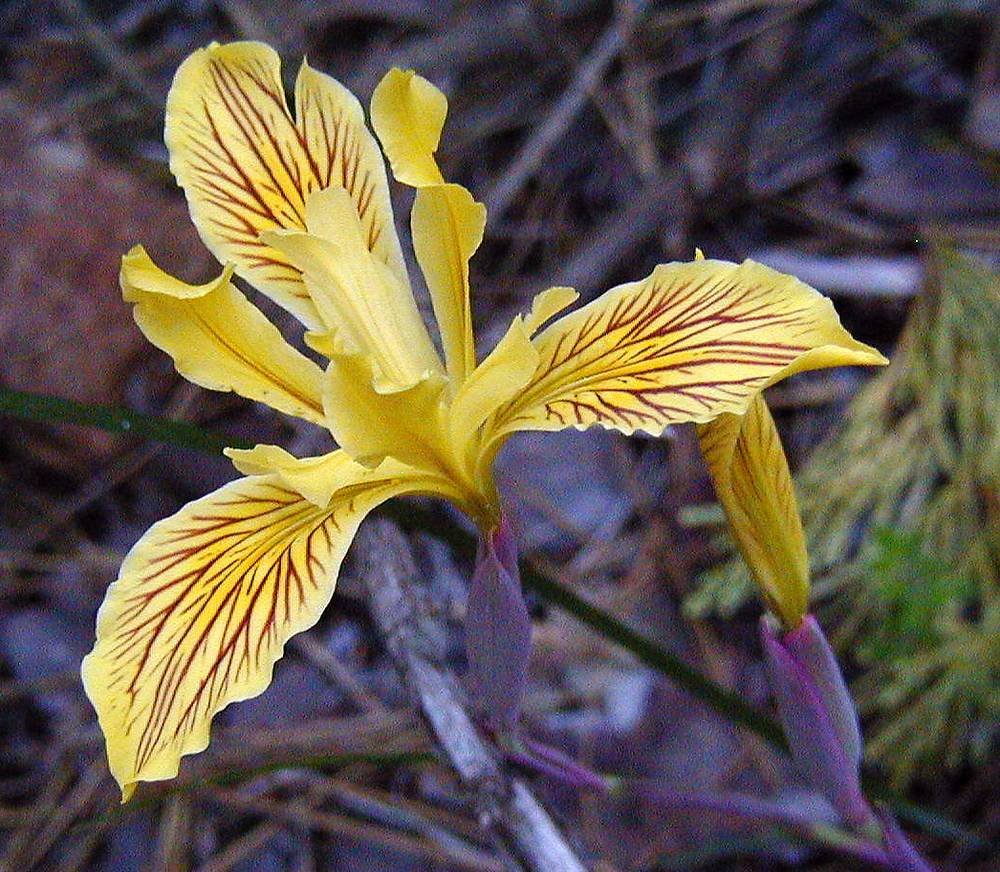Iris pseudacorus
Iris
yellow flag, yellow water iris
iris
fleshy;
rhizomes pink, freely branching, producing extensive clumps with remains of old leaves.
present or not;
rhizomes present;
bulbs present or not.
usually 1-branched.
deciduous; stiff; erect at first then recurved;
blades dark green with prominent median thickening, 20–30 mm wide;
cauline leaves equal in height to inflorescence.
cauline 0–4, usually similar to basal, subtending each branch, decreasing in length distally, sometimes bract-like and sheathing stem.
4–12-flowered;
bracts subequal, green with brown margins; outer bract strongly keeled.
cymes or flowers solitary.
perianth bright yellow or cream; signal a darker yellow basal patch delimited by short, brown lines;
petals without veining;
tube 12–13 mm;
stigmas rounded with prominent tongue.
perianth united in tube;
sepals clawed; signal a ridge, with a line of contrasting colors or a band of multicellular hairs along midline of sepal;
filaments free, flattened and appressed to the under surface of style;
styles divided into 3 branches; each branch further lobed into 2 petal-like tips;
stigma a lip of tissue on abaxial surface of petal-like style.
angled, with obvious groove at each angle.
capsules; loculicidal.
D-shaped, flattened; corky, lustrous.
few to many.
=24, 30, 32, 34.
Iris pseudacorus
Iris
Swamps, wet shores of rivers and lakes, irrigation ditches. Flowering May–Jun. 0–1000 m. BW, CR, Est, Lava, WV. CA, ID, NV, WA; throughout North America; northern Africa, Eurasia. Exotic.
A native to Eurasia and Africa, this taxon is considered invasive in Oregon.
North America, Eurasia. 280 species; 9 species treated in Flora.
Oregon has one exotic member of subgenus Iris (bearded iris; I. germanica). There are seven native species and one exotic member of subgenus Limniris (beardless iris). The Pacific Coast irises (Section Limniris ser. Californicae) is the most species-rich group of Iris in Oregon, represented by I. bracteata, I. chrysophylla, I. douglasiana, I. innominata, and I. tenax. The geographic range of these five species extends into California, and there are an additional six species of Pacific Coast iris that are endemic to California. Hybrids are reported among many pairs of species in section Californicae, making identification of individual plants in areas of sympatry challenging. The other series in section Limniris each have one species in the Oregon flora: series Laevigatae (I. pseudacorus, an exotic species) and series Longipetalae (I. missouriensis, a native species). We have one member of section Lophiris (crested iris), I. tenuis.
Ann Willyard
Ann Willyard
- Local floras:
BC,
CA,
OR,
WA
- Local Web sites:
CalFlora,
CalPhotos,
Flora NW,
PNW Herbaria,
Turner Photog.
WildflowerSearch
iNaturalist (observations)
USDA Plants Database
- LBJ Wildflower Center
- SEINet
- Plants of the World Online
- Encyclopedia of Life
- Wikipedia
- Google Image Search




